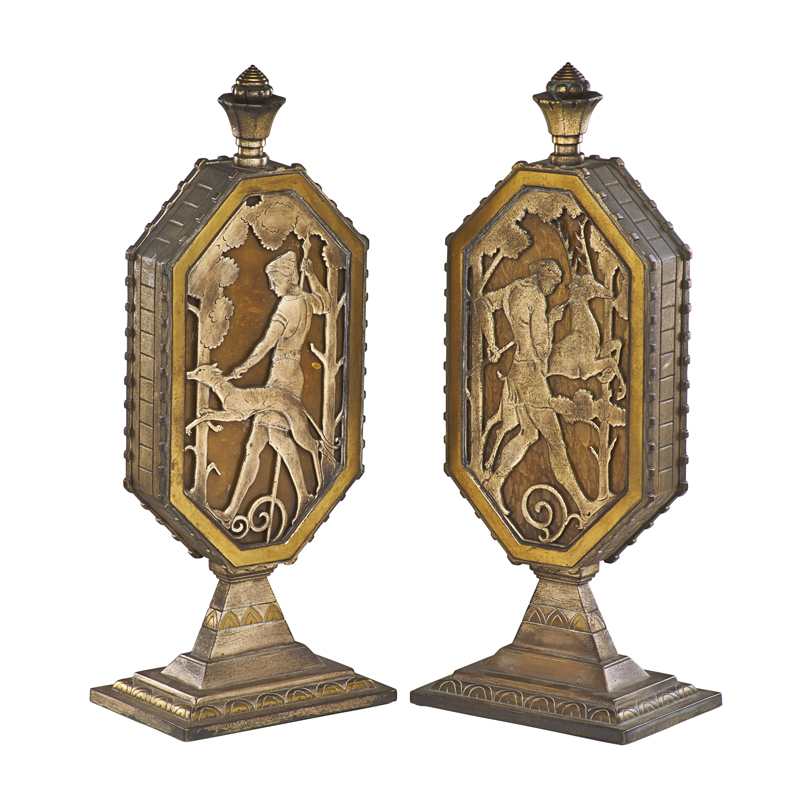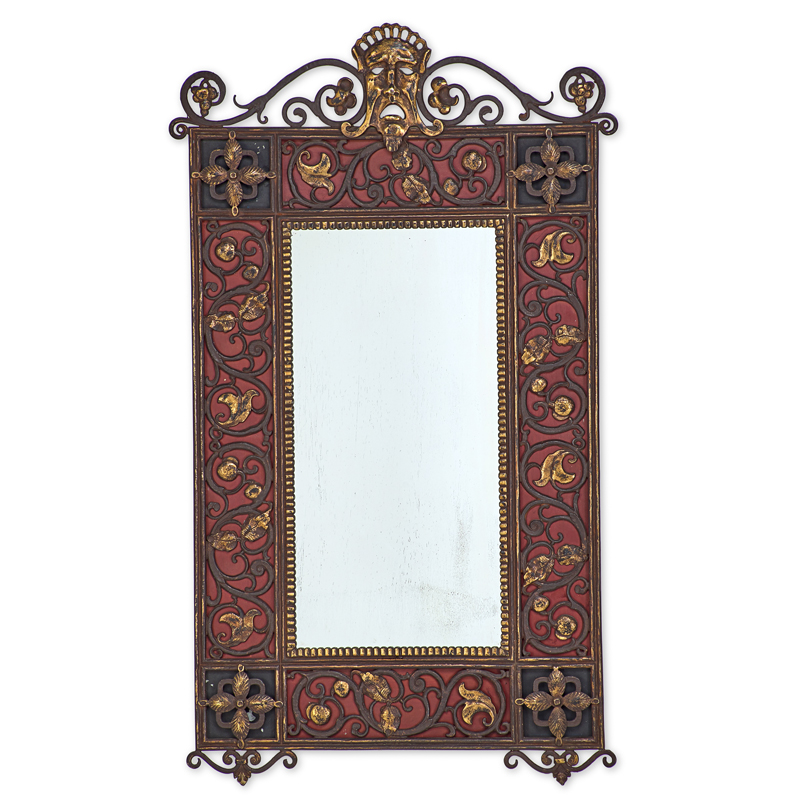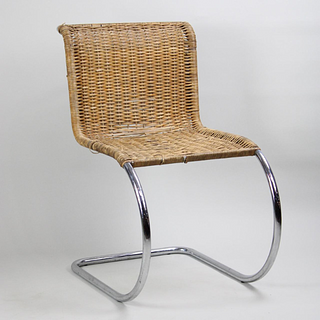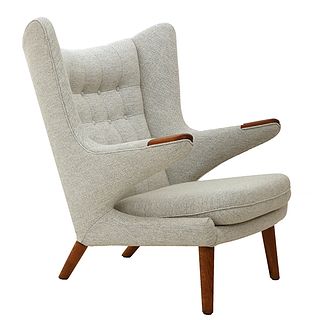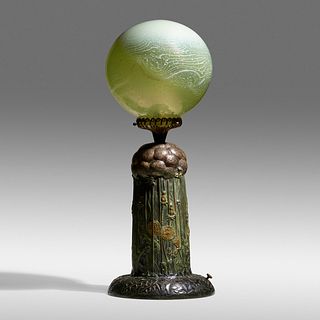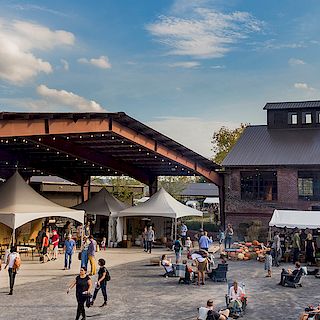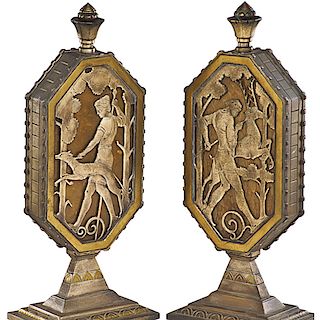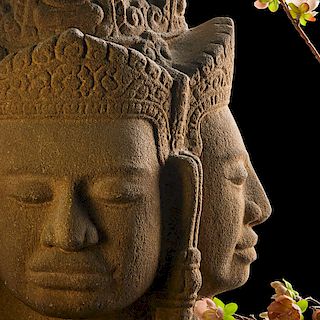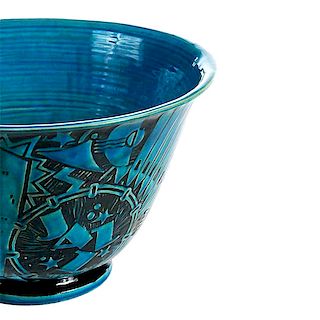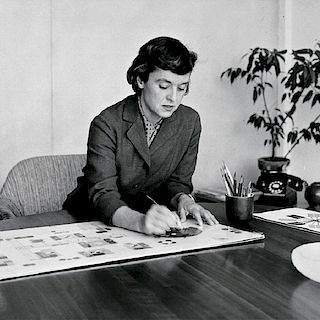Revival at the Remix: All About Oscar Bach
When you enter the lobby of 20 West 34th Street in Manhattan, mountians of grey and white marble, inlaid with bursts of bronze, rise around you in a mighty display of New York iconicism. Directly ahead lies a monumental portrait of the very building in which you stand - the unmistakable, Empire State Building. The lobby mural, aptly done in the Art Deco style, mirroring its contemporary era, as well as the building itself, was designed and installed in 1931 by German born craftsman, Oscar Bach. During the first half of the 20th century, Oscar Bach was one of the most technically skilled and commercially successful artists in the field of decorative metalwork. After all, one doesn't simply land the job of designing the lobby in the world’s most famous skyscraper.
On April 13th, Rago will offer 42 pieces by Oscar Bach in their Remix: Classic + Contemporary sale, with works ranging from tables and lamps, to alter sticks, mirrors, compotes, chairs, sconces, smoking stands, urns, and more. The 'Remix' catalog is an especially fitting placement for a designer who, within his own body of work, seemed to do just that - revive and blend millennia's worth of design history into his life's oeuvre.
Oscar Bach was born on December 13th, 1884 in Breslau, Germany. He studied the metallic arts as a youth at the Royal Academy in Berlin and also attended the Imperial Academy of Art in Berlin from 1898-1902. From the very beginning, Bach's work was in the hands of Europe's elite class - an early, ornate jewel encrusted Bible cover made for Pope Leo XIII still remains in the Vatican's permanent collection.
Between 1904 and 1911, Bach worked as a metalsmith in Germany, while keeping a studio in Venice and periodically traveling the world; Europe, the Middle East, and North Africa. He absorbed and applied a diverse taste for a range of cultures as well as mythological symbols and classical metal elements from style periods such as Gothic, Renaissance, Spanish Baroque, and Tudor.
Continuing on with his trend for travel, Bach decided to move to the United States in 1911 to join his brother Max and establish a business in New York City. They first opened a studio together in Greenwich Village under the name 'Bach Brothers', but quickly moved to West 17th Street and renamed themselves 'Oscar B. Bach Studios'. It was in this second space that Oscar Bach developed his affluent New York clientele and contributed to the interiors and exteriors of their opulent country estates.
In April of 1923, the Bach brothers moved once more into a studio on West 42nd Street after experiencing a bitter split with their business partner, Bertram Segar. Their falling out caused Bach much grief, primarily due to Segar's continuing to reproduce Bach's designs. However, despite this potentially damaging tiff, Bach was able to triumph and set himself apart throughout the 1920s-30s. During this time period, Bach created a prolific amount of works ranging from items as small as ashtrays and as elaborate as custom bronze chandeliers.
The variety of details that can be discovered within Bach's work makes it all the more exciting - neoclassical figures are linked around pedestals like eternal guardians, elongated theater masks moan on the tops of mirrors and collaborations with Steuben display elegant, floating glass bowls upon mythical compotes - all of which can be found in Rago's catalog.
In addition to taking on the grand lobby of the Empire State Building, Oscar Bach also accepted ambitious commissions for spaces such as New York's Riverside Church, Temple Emanu-el, the Masonic Level Club, the Earl Carroll Theatre, the Daily News Building, the Chrysler Building, Rockefeller Center, the Woolworth Building, the Airlines Building, and the Williamsburgh Savings Bank in Brooklyn. His metal works can be found in the permanent collections of The Metropolitan Museum of Art, The Minneapolis Museum of Art, The Wolfsonian, and Reynolda House.
Click here to browse Rago's, Remix: Classic + Contemporary sale on April 13th.
Don't have a Bidsquare account? Sign up here!

Jessica Helen Weinberg | Senior Content Editor at Bidsquare
Be in the know about upcoming auctions and exciting post-sale results by following us on Facebook and Instagram.
[Article references from Oscar Bruno Bach (Breslau, Germany, 1884 - New York, NY, 1957) at oscarbach.org]
- Rafael Osona Auctions' Modern & 19th Century Design From Nantucket Estates
- Quilts as a 2025 Design Trend: A Celebration of American Heritage and Craftsmanship
- A Celebration of Sports History and Collectibles
- The Thrill of Sports Memorabilia Auctions: A Collector’s Paradise
- Demystifying Coin Condition: A Guide to the Sheldon Grading Scale
- Snoopy & Friends: A “Peanuts” Auction at Revere
- Colorful Chinese Monochromes at Millea Bros
- 12 Holiday Gifts for the “Impossible to Buy For” on Bidsquare
- Alluring Art Objects and Accessories from the Estate of Chara Schreyer
- Kimball Sterling's One-Owner Outsider and Folk Art Collection Showcases Masters of the Unconventional



 EUR
EUR CAD
CAD AUD
AUD GBP
GBP MXN
MXN HKD
HKD CNY
CNY MYR
MYR SEK
SEK SGD
SGD CHF
CHF THB
THB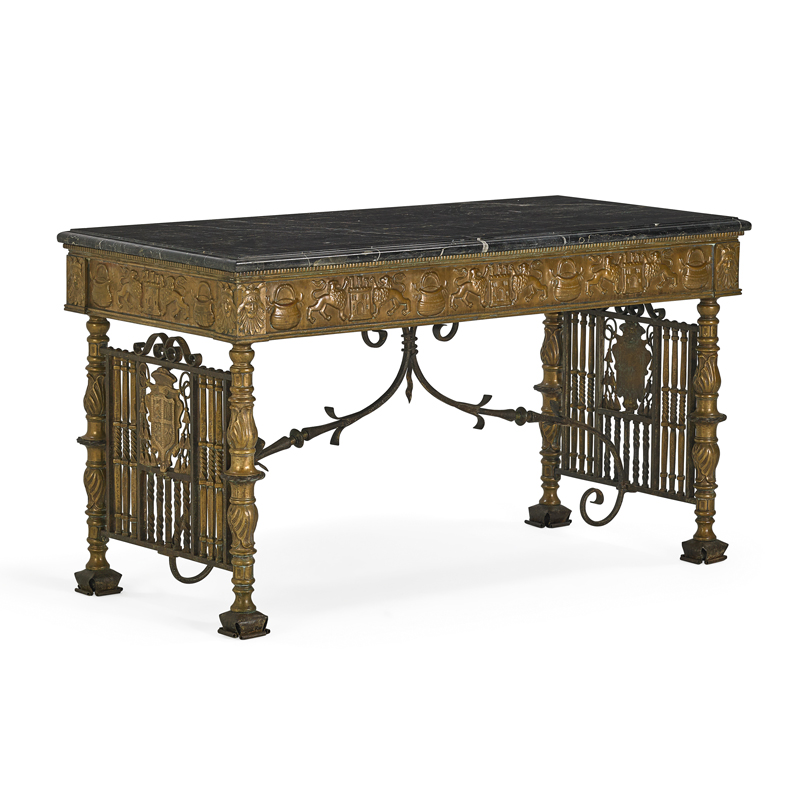
.jpg)
